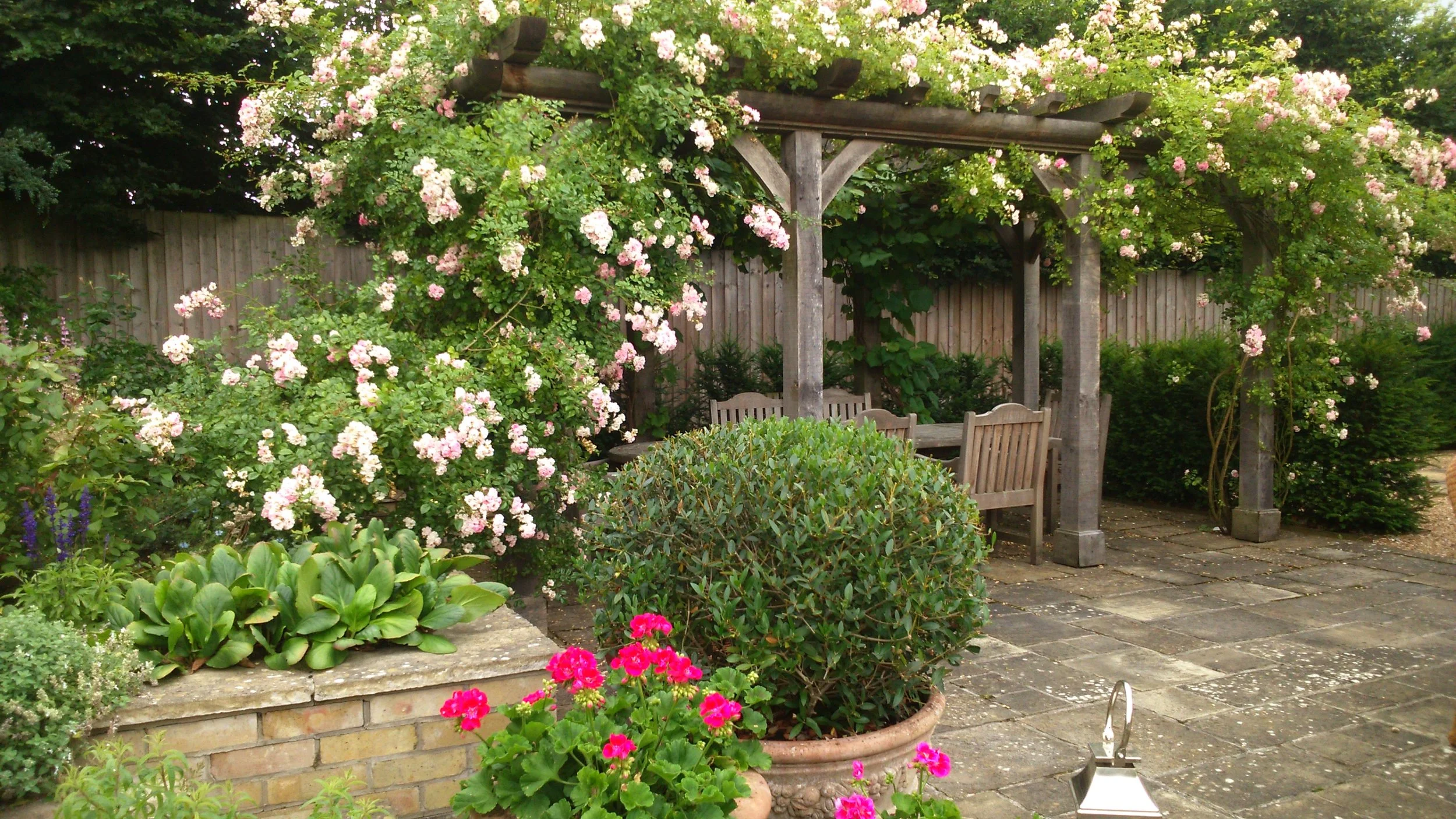Got a pokey patio or a bijou backyard? If your garden feels more pocket-sized than palatial, you can still create the illusion of space with our nifty designer tips. After all, small is beautiful…
1. Keep it simple
Stick to one design idea for small spaces so it doesn't end up looking cluttered. If you primarily want a place for the kids – go with a design that incorporates this. Or, if it’s a haven for alfresco dining that you’re after – make this your main focus, rather than muddling several themes. Use one continuous material for ground covering to give a sense of flow instead of itsy-bitsy lawns, decking and patios.
2. Blend those boundaries
Garden fences and walls will define how small your small space looks, so the ultimate weapon in your design arsenal is disguise. Conceal boundaries with screening – think climbers, sleek cedar panels or natural pleached trees such as hornbeam, holly or crab apple. At Abbotswood, we love pre-grown panels of ivy, Eleagnus, Amelanchier or Euonymus that can be used as an alternative to hedging. And trellis doesn’t have to be the old brown, flimsy wood of the past; today there are many new design options (see www.gardentrellis.co.uk). And always think long term. Conifers may grow quickly but they can be difficult to maintain and soon cause neighbourhood disputes if they grow too large.
3. Keep your perspective
Look at what’s around you when putting pen to paper. Could a neighbour’s plants work as part of your scheme? In our Cambridge gardens we’ll often ‘borrow the backdrop’ to expand the space. If you have a large building or eyesore beyond your boundary, consider moving the screening within the garden closer to the main viewpoint rather than on the boundary to draw the eye away. We’ve taken this approach to a narrow garden in Cambridge, providing a screen to a new two-storey build at the end of the garden. Remember also that darkly painted walls, fences and shed will help them recede.
4. Go vertical
If you haven’t got the square footage, consider growing up. Walls of sheds, garages, houses and fences can all be used to grow climbers, but there’s also plenty of window boxes, wall-mounted planters and pockets available to draw the eye skyward, and at the same time conceal ugly surfaces.
5. Make furniture work harder
Moveable furniture, which can be folded away when not in use, is a great way to create more flexible space in a tiny backyard. But consider permanent furniture too, which could be designed to incorporate storage.
6. Bring the inside out
Linking your inside space with your outside room is the ultimate in house and garden design and immediately gives a seamless effect that makes the space seem larger. If you can’t afford bi-fold doors or a home makeover, consider carrying the paint colour of walls or flooring into the garden or matching outdoor cushions with indoor fabric.
7. Divide and conquer
At Abbotswood we like to compartmentalise our gardens. Concealing certain areas makes the whole space feel bigger and if you add points of interest along the way, an archway or a water feature, these will also draw the eye away from the size. We like architectural water bowls (see www.urbisdesign.co.uk) as they provide water without the need for complicated pond construction. And the added bonus? In a confined space you’ll be able to hear the water wherever you are in the garden.
8. Perfect your planting
You’ll need to think of your small garden as a show garden when it comes to planting. Because everything is visible, you don’t want to overwhelm the space and because you can’t pack it in, your plants have to pack a punch. We stick to a limited palette for our smaller town gardens with shrubs, trees and hedging that have many attributes at many different times of the year. Texture is especially important where plants are viewed at close proximity so choose species of feathery grasses such as Hakonechloa macra or Anemanthele lessoniana, tenuissima, filigree ferns, polystichum, larger leaves acanthus, melianthus, rheum and macleya. Generally cooler colours such as purples and blues make a space feel larger.
9. Create pots of space
Large containers work well in small spaces. Avoid the clutter of lots of small pots and restrict them to seasonal bulbs or perennials, which can be placed on outdoor tables or near entrances to provide short-term interest. At Abbotswood, we often place small trees or shrubs into pots such as Acer sp. Prunus incisa 'Kojo-no-mai’ as well as clipped topiary forms such as Buxus and Phillyrea. Or you could try fruit trees or specimens such as Amelanchier Lamarkii or Pyrus Calleyrana Chanticleer. Potted trees are closer to eye level so you can appreciate their finer qualities (leaves, flowers and scent), and they are great for dividing small plots.
10. Think big
It might seem odd, but larger is better in smaller spaces because it creates a more expansive feel. We use large paving stones and large planters in our urban designs, and are generous in the size of our terraces – maximising the open space near the house. The same applies to planting; large key architectural plants are preferable to a ‘bity approach’.
And remember to cut the grass
You might have dreams of an immaculate striped lawn but many town gardens suffer from a lack of light, too much traffic and awkward shaping, which can turn a manicured lawn to messy almost overnight. This is when Abbotswood’s garden maintenance service really pays dividends, as we are able to lavish your lawn with TLC while you get on with the enjoyable jobs!

